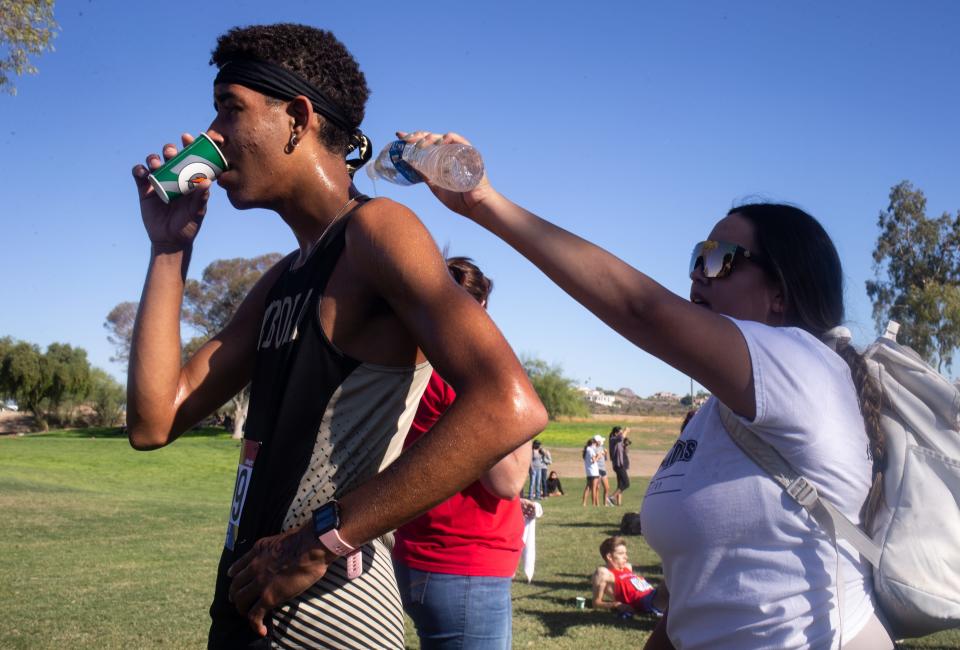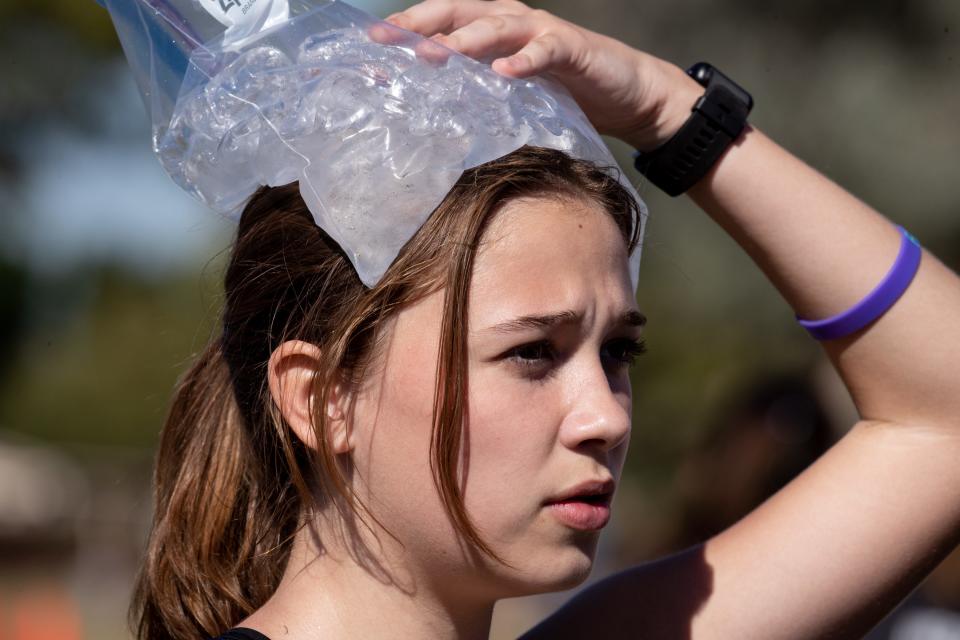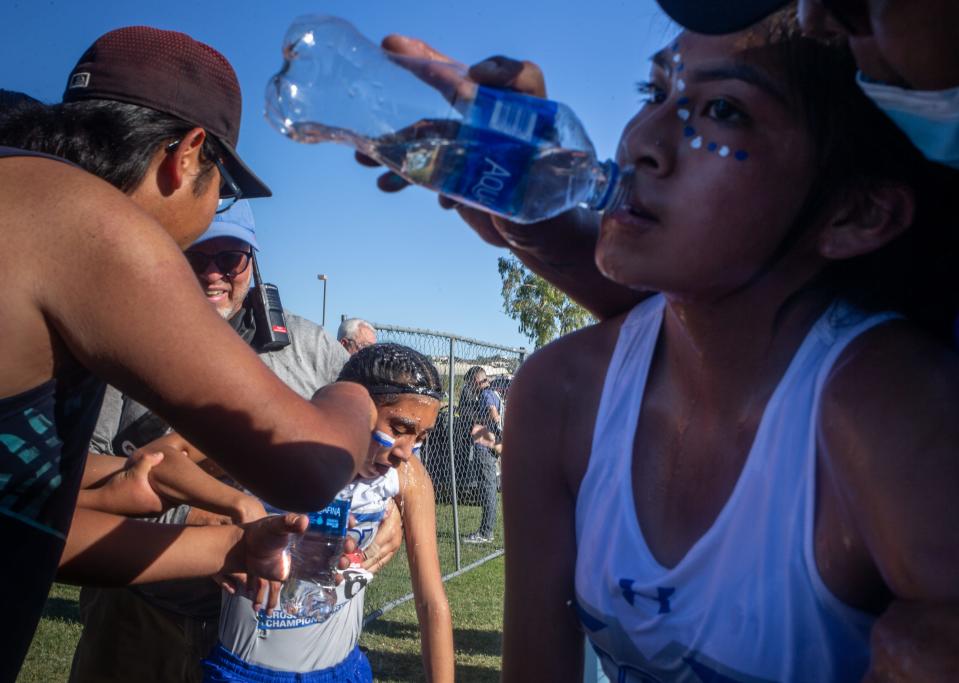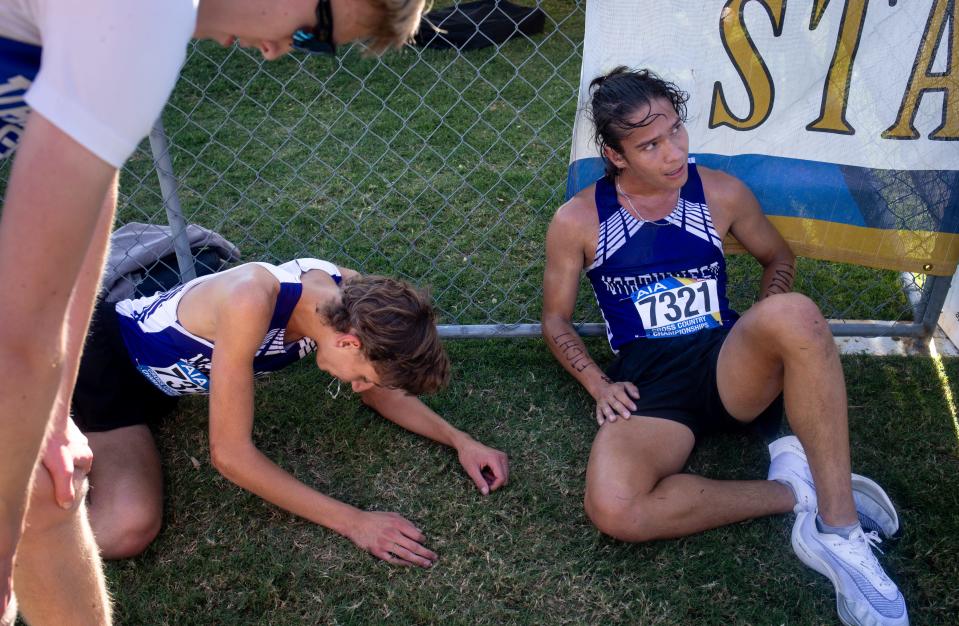Arizona high school cross-country teams deal with heat, even as weather 'cools'

Despite relatively cooler temperatures taking hold in October, high school athletes in the Phoenix area who compete outdoors still need to contend with heat-related risks.
That can be especially true for cross-country runners, who train and compete in the heat during the time of day when others would be advised not to.
It's not unusual for boys and girls meets to take place between 3:30 and 6 p.m., typically the hottest part of the day. And even though 100-degree days may be behind us, highs in the 90s still can persist. Even competing when the temperature is in the upper 80s can pose a challenge.
At last year's state high-school cross country finals, held in north Phoenix on Nov. 13, it was common to see runners trying to cool down.
Coaches and athletes, who begin competing in late August, must acclimate to the heat and know how to prepare for it.
Buckeye Verrado high school starts their season off by practicing as early as 5:30 a.m. before the day begins heating up, said Natali Martinez, the school's cross-country head coach.
"If we waited until after school we wouldn't be running till about 8 or 9 o'clock in the evening," said Martinez. "Even then it's not guaranteed that we would be able to run because the wet bulb index might say it's still too hot even at 9 p.m.."
The wet bulb index is a measure of the heat stress in direct sunlight. It takes into account temperature, humidity, wind speed, sun angle and cloud cover. This is an effective element to monitor due to the exposure levels at higher temperatures and is used to reduce the number of heat-related illnesses.

While early practice times can be a drag for younger team members, Martinez said he relies on more experienced runners to encourage newcomers and remind them ow the training will pay off.
"The seniors really own that and feed that to the younger classmen," said Martinez. "They let them know that you're going to get better. It may not feel like it but by the end of the season you will have dropped minutes off of your time."
Keith Hanson, in his book the Hanson's Marathon Method, says runners can add 15 seconds per mile when temperatures drop into the 80s. Running in the heat will make anybody slower. As one's blood volume is decreasing, your body supplies less oxygen to working muscles and gives less energy. All this will make the heart and lungs work harder, which leads to slower times.
There are multiple heat-related illnesses that an athlete can face if they are not properly hydrated or prepared for these conditions. They include heat cramps, fainting, heat exhaustion, hyponatremia (a drop in electrolytes) and heat stroke.
In Arizona, high school cross-country meets can have their times pushed to later in the day if especailly hot conditions exist. A runner's preparation well-ahead of the meet is important, Martinez said, such as hydration and eating proper foods.
"I tell them at minimum you should be drinking X amount of hydros or by third hour you should have already refilled your water bottle once," Martinez said. "Especially for my freshman who still don't really know how to gauge their hydration and think they're invincible."

Martinez sends text messages to remind his team about this. The messages are timed to be sent during times in between classes.
"Their health is definitely my number one priority," Martinez said. "If they can be honest with me and say I didn't drink enough water, then we'll make accommodations and modifications to their workout."
Water is always out and provided at practice and the message during runs is if you don't feel well just turn around and start walking back to campus. Parents and guardians also help play a role for meets by helping provide drinks or snacks for the team.
"That's really the highlight of these kids race," said Martinez. "One just finishing the race and two just being able to devour all the snacks at the team camp right afterwards."
Providing bananas, water and coolers filled with ice and are important to combat heat related illnesses. Martinez said students are advised to wear hats and can grab ice from the coolers to put under their hats or on their heads so it can drip onto them and keep them cool as they await their races.

Martinez said as the runner train in heat over time, their bodies acclimate to the conditions and adapt. As the body learns to adapt it improves the efficiency of running once temperatures cool.
But, the bottom line: Training in heat requires preparation and attention to details, while keeping the body's signals in mind during a run.
This article originally appeared on Arizona Republic: Arizona cross-Country teams adjust to high temperatures

